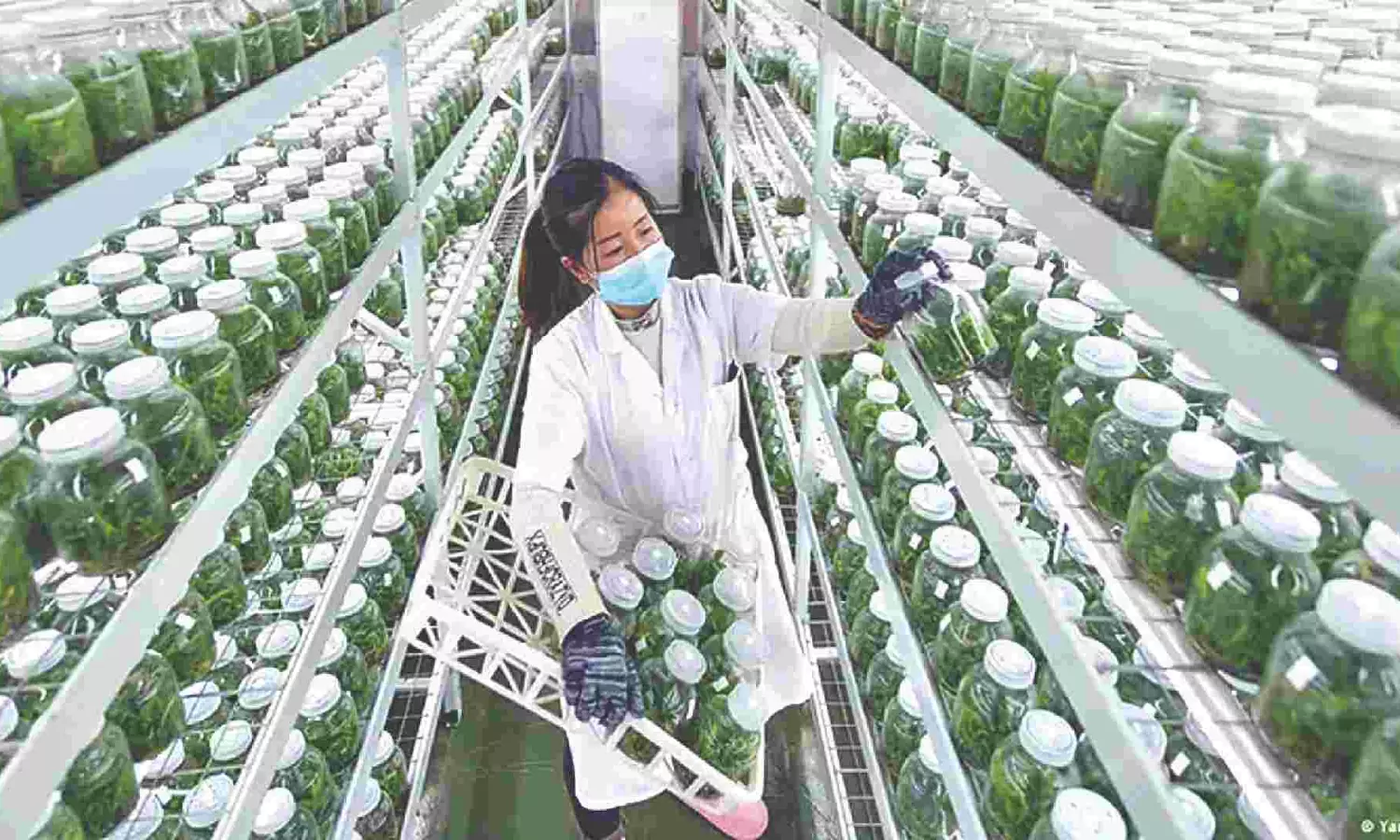Food security: Can AI and genome editing help?
One way of meeting this massive challenge would be to use the land currently given over to meat production and crops for animal feed to plants for human consumption. But this would require everyone becoming vegetarian, which is an unrealistic scenario. Enter artificial intelligence.;

Representative Image
Tim Schauenberg
Producing what we need to eat puts an enormous burden on both the climate and the environment. Yet, at the same time, crop failures caused by extreme storms, drought and heat waves threaten the food security of a growing global population. In a clear indication of the dilemma we face, a World Resource Institute (WRI) report recently said that to feed the world’s population, humans must produce more, but without increased use of resources and land. “There’s a 50% gap between the food produced today and what we’re going to need in 2050, just to feed people adequately,” said Janet Ranganathan, a nutrition expert at WRI and co-author of the report, adding that expanding the agricultural frontier would mean “saying goodbye to the remaining natural ecosystems.” One way of meeting this massive challenge would be to use the land currently given over to meat production and crops for animal feed to plants for human consumption. But this would require everyone becoming vegetarian, which is an unrealistic scenario. Enter artificial intelligence.
Drought-resistant rice paddiesScientists want to use AI and what is known as the CRISPR-CAS9 gene scissors to develop climate-resistant super-cultures capable of delivering higher yields with fewer resources. They do this by modifying the plants’ genes using a method called genome editing.
Rice offers a perfect field for experimentation. Traditionally a very thirsty plant that grows submerged in water, rice has been hit hard by extreme drought from Italy to China and Pakistan. A new variety called IR64 could help. It grows primarily in Asia and parts of Africa but is sold throughout the world.
Gene modification has made the plant more drought-resistant. In some weeks, it needs up to 40% less water than before. And while the mother plant died after a week without water, half of the modified plants survived. Genome editing is fundamentally different from traditional genetic engineering. “It actually relies on natural processes. But it makes the mutation process much less random,” said Detlef Weigel, a biologist at the Max Planck Society in Germany. Most genetically modified products, whether animals or plants, have been implanted with an artificial gene or a gene from another organism. Insect-resistant cotton or corn, for example, contain a gene that originally came from a bacterium.
Instead of using foreign DNA, gene editing can change the genetic code using an organism’s own DNA. With special enzymes that work like scissors, genes from the plant can be deleted, swapped or repeated. It would take many dozens of breeding generations to transfer a single gene by natural crossing. And this would simply take too long to be viable, Weigel explained. “So genome editing is really super powerful because you can go in the single gene, change it. And voila!” While crossbreeding can take more than ten years to get the desired result, gene editing takes only a few months and the testing phase a few years.
And it’s not just about drought-resistant rice. Some studies show that it’s possible to increase tomato yields by up to 70%. Others are trying to grow soybeans in barren and saline soils or reduce methane emissions from rice. And Kenyan scientists are developing what they call a “smart banana.” In their laboratory, they have succeeded in activating a gene that switches on the plant’s own immune system as a preventive measure against a virus that becomes active during drought.

